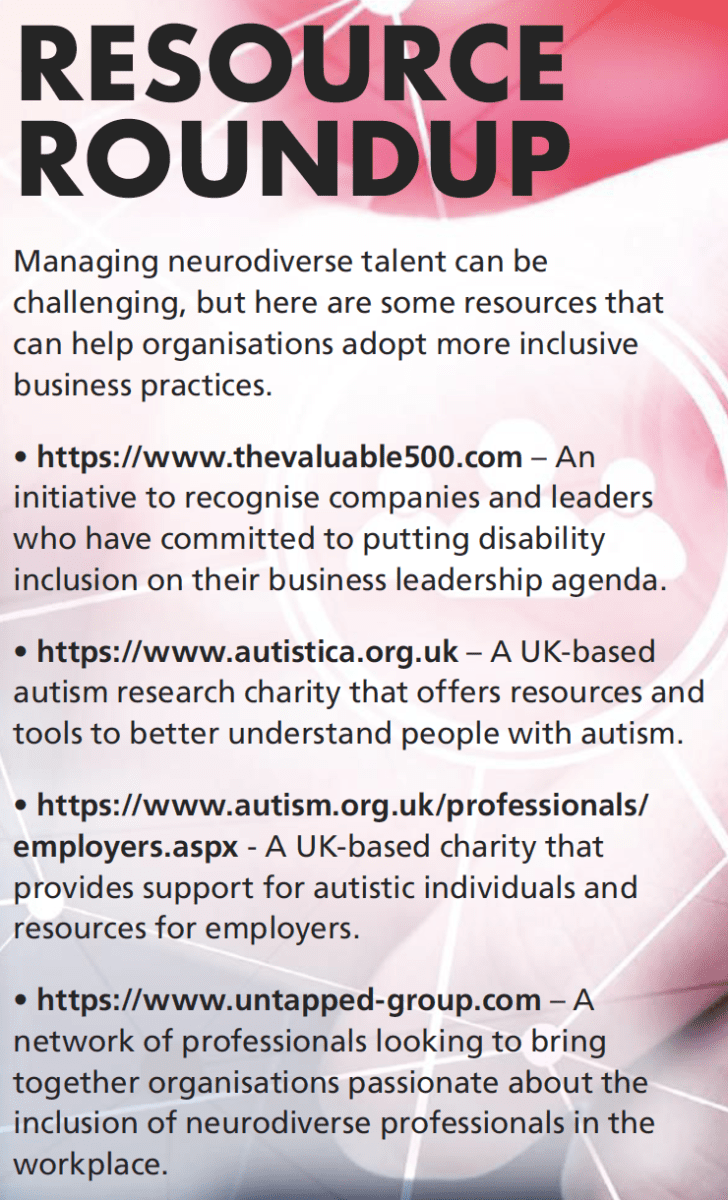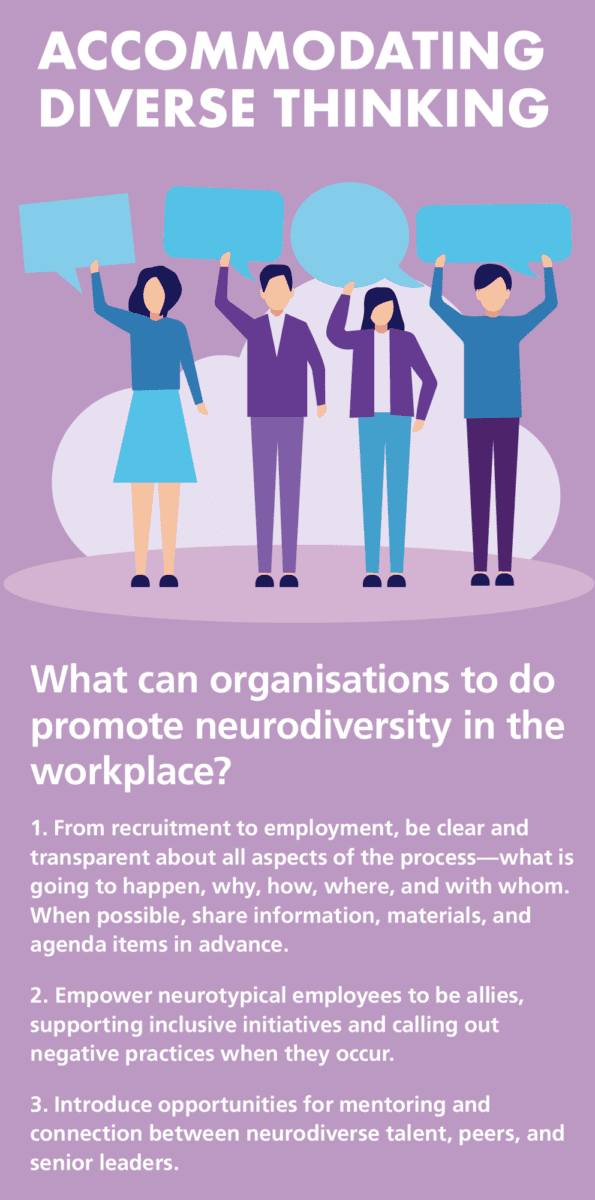Employing neurodiverse talent can provide a competitive advantage, but this segment of the workforce requires special considerations.
By Simon Kent
Many organisations look to embrace different thinking as a means to attain a competitive edge. Indeed, tech giant Apple’s whole branding strategy at one point was “Think Different.” Today, that mantra has taken on a new meaning as businesses begin to view neurodiversity as the next stop on their diversity and inclusion agenda.
Alan Price, chief operating officer at global employment law consultancy Peninsula, explains that the term “neurodiversity” recognises several neurological conditions, such as autism, dyslexia, and attention deficit hyperactivity disorder (ADHD). A business that is open to these types of diverse employees can secure a number of advantages.
“Neurodiversity can cause certain individuals to have higher levels of innovation, have the ability able to think creatively or more laterally than others, to analyse strategically, and to develop highly specialised skills,” explains Price.
Dr. Jill Miller, diversity and inclusion adviser at the CIPD, agrees. “Alternative thinking styles, such as dyslexia, dyspraxia, ADHD, and autism, can be associated with unique strengths that are sought after by many employers,” she says. “For example, an ability to spot patterns and trends, being able to process information at high speed, and data-driven thinking.”

From recruitment to ongoing employment, Bremner lists a number of interventions MediaCom implements to ensure neurodiverse talent is valued and supported.
- Candidates are selected for their passion rather than education or CV contents. Incidents such as CV typos do not automatically screen individuals out.
- Candidates are given complete details on what their recruitment process will entail, who they will meet, where and when it will happen, and what will be discussed.
- The company has even created a virtual reality experience covering the journey from the tube station to the office, thereby avoiding pre-arrival confusion.
Price explains why this kind of forward preparation is important for supporting neurodiverse talent. “As neurodiversity affects the brain and its interpretation of information, this can have a significant impact on how an individual interprets communication, physical contact, and sight,” he says. “These are all critical parts of the workplace and the working environment, meaning an individual in this position may struggle at work and present challenges for their employer.”
Making information available and ensuring the individual fully understands what is going to happen, how, and why, means these challenges can be mitigated. Such forward preparation is also in evidence during everyday work at Fujitsu. With an awareness that some neurodiverse employees may find it difficult to contribute to meetings if they don’t know what’s going to happen, background materials and agendas are shared in advance.
Social Support for Neurodiverse Talent
Fujitsu HR Consultant Karen Thomson says her company -one of the first to sign up for the Valuable 500 initiative launched by Caroline Casey at Davos this year -has created an “Allies Guide” which empowers all staff to take the initiative in supporting neurodiversity and supports them in calling out negative practices when they occur.
With a strong Disability Employment Network operating across the organisation, raising awareness and introducing initiatives to make the workplace more inclusive, the business has also launched an app called “Buddy Connect,” which pairs new joiners with an existing employee. The app enables the new employee to indicate to their buddy how their day is going and if they need additional support at any time. The relationship is therefore separate from their line manager, giving the employee the assurance that someone in the business is ready to help them whatever the circumstances.

The CIPD’s Dr. Miller confirms that success in neurodiversity requires appropriate actions from the business’ leaders. “Do they make the effort to get to know their team members, understand their strengths and what they find more challenging, and ask them if there is anything that would enable them to perform better at work?” she asks.
Measuring the presence and performance of neurodiverse talent in organisations is still something that employers are developing. Recording the status and experience of this talent is sometimes complicated by the nature of their disability and how much information the individual wishes to share with their employer. That said, both Fujitsu and MediaCom are on the road to monitoring this aspect of their workforce in the future.
Even without exact data, these types of initiatives have already had a positive impact on how neurodiverse employees are viewed in the workplace. As Dr. Miller explains, “The conversation around neurodiversity used to be focused on what people can’t do. But forward-thinking employers are realising the talent they’re missing out on and are focusing instead on the strengths people bring to their organisation and the adjustments that they can easily make.”














